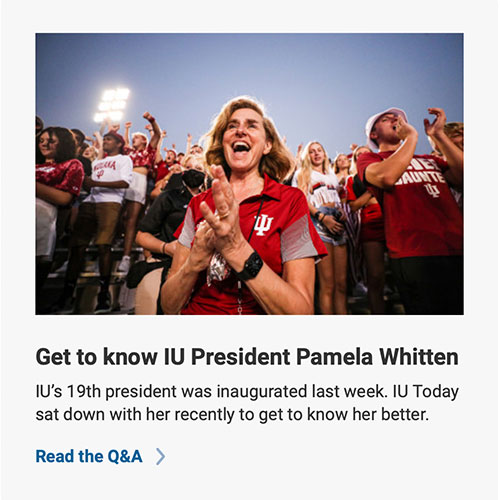For most emails, the primary purpose is prompting the recipient to click a link or button that leads to your website for further engagement. Clear and compelling call-to-action links and buttons accomplish this goal.
Calls-to-action (CTA)
A call-to-action is the specific action you want your constituents to take after reading your email. CTAs are presented as either clickable buttons or text hyperlinks, and can lead to anything from a website page to filling out a form.
CTA Recommendations:
- Include one primary CTA and place in a prominent position. This CTA is the most important action for your recipients to take. Place the primary CTA close to the top of the email, so it’s visible immediately without scrolling if possible.
- If appropriate, include secondary CTAs. These CTAs are supplementary actions you want your recipient to take. They’re common in newsletters or other multifaceted emails. Secondary CTAs can be in different positions in the email, but make sure the primary CTA is most prominent.
- Limit the overall number of CTAs. You don’t want to confuse recipients with too many options. If your email is focused and concise, there won’t be room for multiple links (with the exception of newsletters).
- Make the action and web destination clear. Write your CTAs so the action you want your recipients to take—and where they will go when they click—is a quick and compelling choice for them.
- Use descriptive but succinct language. Refrain from using “read more” or “learn more” or “click here.” They don’t provide a compelling reason to click, explain where the recipient will go when they click, or meet accessibility guidelines. Instead, start your CTA with a precise action verb that generates more interest, such as:
- Join the ceremony
- Sign up now
- View the schedule
- Explore campus
A Word about Your Website
When crafting your email and CTAs, consider all aspects of the constituent experience—including the website people reach after clicking a link in your email.
- Align your CTAs with their web destinations. Your CTA creates an expectation about what the recipient can see or do once they click. Make sure the linked page has the content that fulfills this expectation. In some cases, you may have to create a new web page to optimize the overall experience.
- Link to the most directly-related web page. Avoid sending recipients to a general page they have to navigate on their own. They should land directly on a page that has the information they expected from the link.
Buttons
- Use a button for your primary CTA. Buttons stand out with their color contrast and generous whitespace around them, making them a great option for your most important call-to-action.
- Keep it short. Use no more than 3-4 short words, or 25 characters with spaces. The phrase should be short enough to stay on one line within the button, even on a narrow mobile screen.
| Not quite... | That's better! |
Hyperlinks
- Use hyperlinks for secondary CTAs or additional information. A hyperlink is text that has been transformed into a clickable link. They’re often ideal for secondary CTAs, or sharing additional information, within a sentence or paragraph.
- Select the most relevant text to hyperlink. The hyperlinked text should be the portion of a sentence that is most pertinent to the passage and the web destination content.
- Limit the length of your hyperlink. While greater length is acceptable for hyperlinks, select no more than 5 words to link. Because of their vibrant styling, unnecessarily long hyperlinks are overwhelming.
- Format hyperlinks to follow Email Framework standards. Hyperlinks should be set to the color #006298 and underlined. Do not bold.
| Not quite... | That's better! |
| Priority registration opens Monday, October 25. Check the Student Center for your time to register for spring classes. | Priority registration opens Monday, October 25. Check the Student Center for your time to register for spring classes. |
| The October Insights Digest has been published. This month's issue focuses on the enrollment cliff and the price of college. | The October Insights Digest has been published. This month's issue focuses on the enrollment cliff and the price of college. |
| Congratulations once again on completing Marketing Cloud 2.0 Training! You now have Level 2 access to the platform. | Congratulations once again on completing Marketing Cloud 2.0 Training! You now have Level 2 access to the platform. |
Other Link Types
Some Email Framework blocks, like story snippets, feature built-in hyperlink CTAs designed to serve like buttons. Depending on the block’s content and position within the email, this type can be used for primary or secondary CTAs. Blocks with built-in hyperlink CTAs should follow the same length guidelines as buttons.


